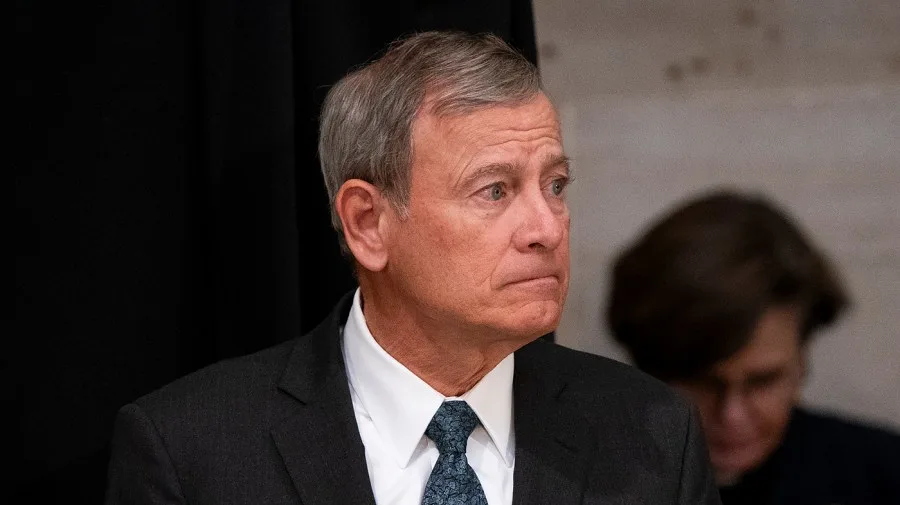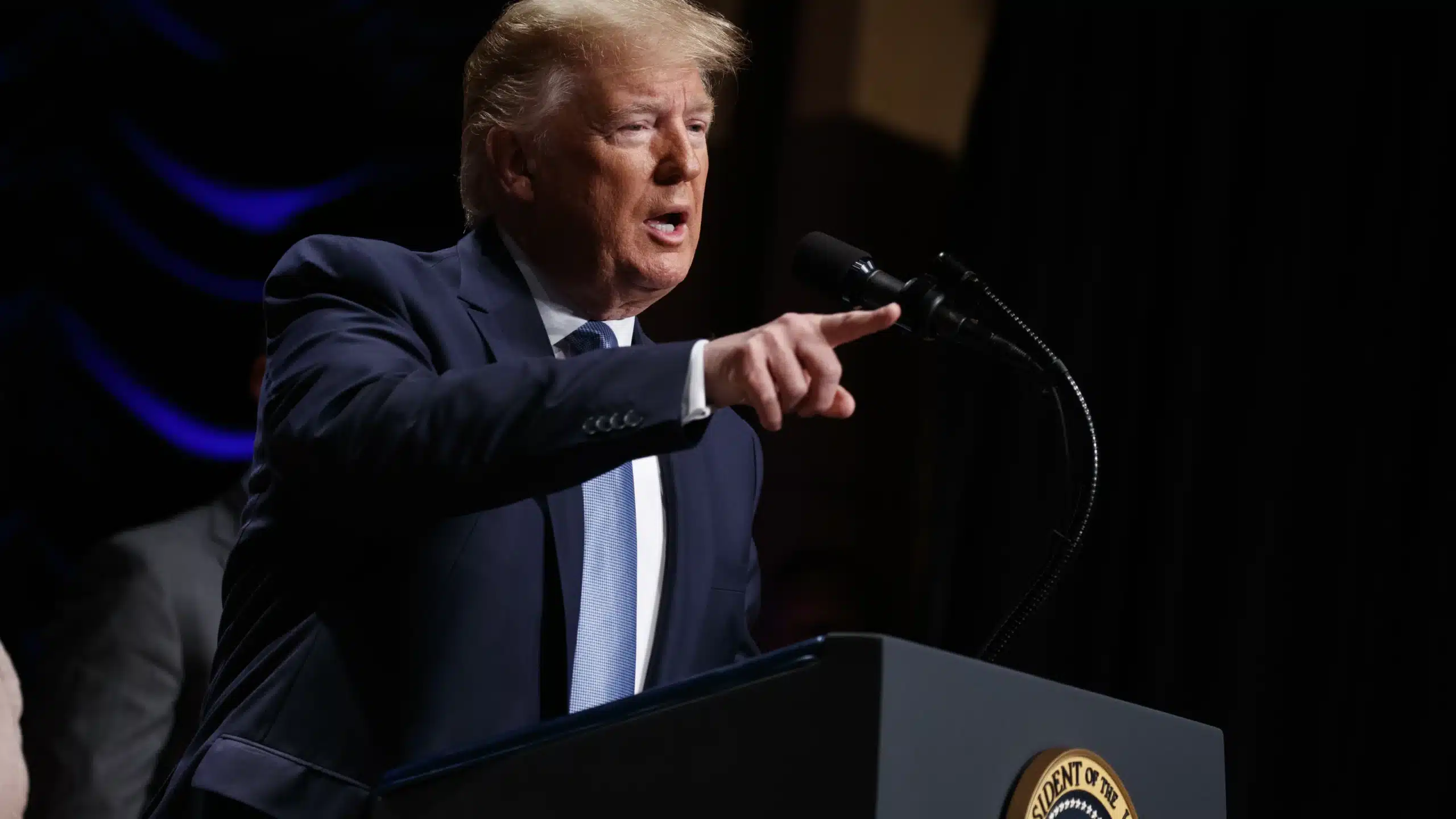In a significant development that has drawn global attention, Chief Justice John Roberts temporarily paused a lower court ruling that ordered the Trump administration to release billions in frozen foreign aid funds. This decision adds yet another layer of complexity to the already contentious debate surrounding U.S. foreign aid, executive power, and the checks and balances between the branches of government. The pause has sparked widespread discussion in Washington and beyond, raising critical questions about the separation of powers, the role of the judiciary, and the implications for America’s global commitments. As foreign governments, humanitarian organizations, and U.S. lawmakers wait for clarity, the stakes could not be higher, both for America’s international standing and for millions of people who depend on this funding for survival.
- Understanding the Case and Its Background
- The Role of Chief Justice John Roberts
- Foreign Aid and U.S. Global Commitments
- Separation of Powers at the Center of the Debate
- Political Reactions in Washington
- Global Repercussions and Humanitarian Concerns
- Legal and Historical Precedents
- Looking Ahead: What Comes Next
- FAQs
- Conclusion
The ruling comes at a time when foreign aid is already under intense scrutiny. The Trump administration had sought to reshape U.S. aid policies to reflect what it described as “America First” priorities, often tying assistance to political or strategic objectives. Critics, however, have accused the administration of using aid as a bargaining chip in foreign policy negotiations, at times jeopardizing crucial humanitarian projects. Now, with Roberts’ intervention, the immediate release of funds remains uncertain, fueling political battles and humanitarian concerns alike.
Understanding the Case and Its Background
The case centers on a legal challenge brought against the Trump administration after it froze billions of dollars in foreign aid that Congress had already appropriated. Lawmakers argued that the executive branch exceeded its constitutional authority by withholding funds that had been approved through the legislative process. A lower court agreed, ruling that the administration must release the money without delay. The court emphasized that Congress, not the executive, has the power of the purse, a principle deeply rooted in the Constitution.
However, the Trump administration appealed the ruling, arguing that the president has broad discretion in executing foreign policy and determining when and how aid should be distributed. By pausing the lower court’s order, Chief Justice Roberts effectively gave the administration temporary relief while the case undergoes further review. The pause does not indicate a final decision, but it highlights the weight of the constitutional questions at play.
The Role of Chief Justice John Roberts
Chief Justice Roberts has often been described as an institutionalist, someone who prioritizes the integrity and stability of the Supreme Court above partisan considerations. His decision to intervene in this case reflects that reputation. By pausing the ruling, Roberts signaled the need for the Court to take a closer look at the separation of powers dispute without allowing immediate consequences that could be irreversible.
Legal experts note that Roberts’ action should not be interpreted as siding with the Trump administration but rather as a measure to ensure proper judicial review. “It’s a procedural move,” explained one constitutional law scholar. “The Chief Justice is essentially saying, ‘Let’s slow down and examine the legal issues carefully before forcing the executive branch to act.’”
Foreign Aid and U.S. Global Commitments
At the heart of this legal battle is the question of foreign aid and America’s role in the world. The United States is the largest donor of foreign assistance globally, providing over $50 billion annually for development, humanitarian relief, and security cooperation. These funds support everything from vaccination campaigns in Africa to food aid in the Middle East and disaster relief in Asia.
When the Trump administration froze certain aid packages, the impact was immediate. Reports emerged of stalled humanitarian projects, delayed medical shipments, and uncertainty among non-governmental organizations that rely on U.S. funding to operate. For countries dependent on American assistance, the freeze raised fears of political instability and humanitarian crises.
The controversy also underscores the symbolic weight of U.S. foreign aid. Beyond dollars and logistics, aid represents a projection of American values and influence abroad. Cutting or delaying these funds risks signaling disengagement at a time when global crises—from climate change to armed conflicts—demand international cooperation.
Separation of Powers at the Center of the Debate
The constitutional clash between Congress and the executive branch lies at the heart of the case. Article I of the Constitution gives Congress the power to control federal spending, while Article II grants the president authority over foreign policy. This case raises a fundamental question: Can a president unilaterally block funds appropriated by Congress if he believes it aligns with foreign policy objectives?
Supporters of the administration argue that the president must retain flexibility in executing foreign aid, especially when circumstances change rapidly overseas. They point to national security considerations and argue that Congress cannot foresee every eventuality. On the other hand, critics contend that allowing the executive to withhold appropriated funds undermines the constitutional balance and sets a dangerous precedent.
This debate is not new. Past administrations, both Republican and Democratic, have clashed with Congress over spending authority. However, the Trump-era freeze was unusually broad and politically charged, prompting legal challenges that now reach the highest court in the land.
Political Reactions in Washington
The pause has intensified political battles on Capitol Hill. Democrats, who have long accused the Trump administration of overstepping its authority, expressed frustration. “This is a dangerous abuse of power,” one senior lawmaker said. “Congress approved these funds, and they must be released as intended.”
Republicans, meanwhile, largely defended the administration, framing the issue as one of executive discretion in foreign affairs. “The president is the commander-in-chief, and he must have flexibility to ensure that U.S. taxpayer dollars serve America’s interests abroad,” argued a Republican senator.
The White House welcomed Roberts’ intervention, portraying it as a validation of the administration’s position. “This pause allows us to make our case before the Court without being forced into premature actions that could undermine U.S. policy objectives,” a spokesperson said.
Global Repercussions and Humanitarian Concerns
Outside Washington, the pause has created uncertainty in countries that rely heavily on U.S. assistance. Humanitarian groups warn that delays in aid distribution can have life-or-death consequences. For example, in regions facing famine or disease outbreaks, even short interruptions in funding can mean shortages of vaccines, food supplies, and medical care.
The United Nations and international NGOs have expressed concern about the precedent the case may set. “If aid becomes subject to political tug-of-war in Washington, the consequences will be felt far beyond America’s borders,” said a representative of an international relief agency.
Global allies are also watching closely. For many countries, U.S. aid is not just about financial support but also about partnership and trust. A prolonged freeze risks damaging America’s credibility as a reliable partner, especially at a time when rival powers like China are expanding their influence through aggressive aid and investment programs.
Legal and Historical Precedents
The case echoes past disputes over executive spending authority. One notable example is the 1970s battle between Congress and President Richard Nixon, who attempted to impound funds for programs he opposed. The Supreme Court ultimately ruled against Nixon, reinforcing Congress’s authority over the budget. Legal scholars suggest that the Trump-era freeze may fall into a similar category, though the nuances of foreign aid and national security add layers of complexity.
Roberts’ decision to pause the ruling suggests the Court may revisit these precedents in light of modern challenges. Whether the Court ultimately reaffirms congressional authority or grants greater discretion to the executive will shape U.S. governance for decades to come.
Looking Ahead: What Comes Next
The Supreme Court’s eventual decision will have far-reaching consequences, not only for foreign aid but for the balance of power in the federal government. If the Court sides with Congress, it will reaffirm legislative supremacy over spending and limit executive maneuverability. If it sides with the Trump administration, presidents may gain unprecedented authority to shape or block congressional appropriations based on policy preferences.
For now, Roberts’ pause buys time, but it also prolongs uncertainty. Aid organizations, foreign governments, and millions of vulnerable people remain caught in limbo, waiting for clarity on whether vital funding will flow.
FAQs
Why did Chief Justice Roberts pause the ruling?
Roberts paused the lower court ruling to allow time for further review of the complex constitutional questions at play. The pause does not indicate a final judgment but ensures the Supreme Court can fully evaluate the case before forcing immediate action.
What funds are being affected by the freeze?
The funds in question involve billions of dollars in foreign aid, including humanitarian assistance, development programs, and security cooperation initiatives that Congress had already approved.
How does this case relate to the separation of powers?
The case highlights a clash between Congress’s authority to control federal spending and the president’s discretion in executing foreign policy. The Supreme Court’s decision will determine how far executive power extends in withholding appropriated funds.
What are the potential consequences for foreign countries?
Delays in aid can disrupt humanitarian projects, stall medical supply chains, and create political instability in regions that rely on U.S. support. Aid-dependent countries risk facing severe humanitarian challenges if the freeze continues.
Has this type of dispute happened before?
Yes. In the 1970s, President Nixon attempted to withhold congressionally approved funds, leading to a Supreme Court ruling that reinforced Congress’s budgetary authority. The Trump administration’s case may test those precedents in a modern context.
Conclusion
Chief Justice Roberts’ decision to pause the ruling that ordered the Trump administration to release frozen foreign aid funds has amplified a debate at the very core of American democracy: the balance of power between Congress and the presidency. While the immediate future of billions in aid remains uncertain, the broader implications are clear. This case is not simply about dollars and programs—it is about constitutional authority, America’s role on the global stage, and the lives of millions who depend on timely assistance.
As the Supreme Court prepares to weigh in, the world waits. The final decision will not only shape the contours of executive and legislative power but also send a powerful signal about America’s commitment to global leadership and humanitarian responsibility in an increasingly uncertain world.










